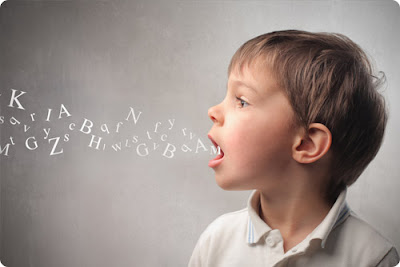SPEECH DEVELOPMENT - Infant to Childhood.

What are Voice, Speech and Language? Voice, Speech and Language are the tools we use to communicate with each other. VOICE: is the sound we make as air from our lungs is pushed between vocal folds in our Larynx , Causing them to vibrate. SPEECH: is talking , which is one way to express language. It involves the precisely coordinated muscle actions of the tongue, lips, jaw , and vocal tract to produce the recognizable sounds that make up language. LANGUAGE: is a set of shared rules that allow people to express verbally or by writing, singing or making other gestures , such as eye blinking or mouth movement. How do Speech and Language develop? The first 3 years of life ,when the brain in developing and maturing , is the most intensive period for acquiring speech and language skills. These skills develop best a world that is rich with sounds, sights and consistent exposure to the speech and others. There appear to be critical periods for speech and language development...

